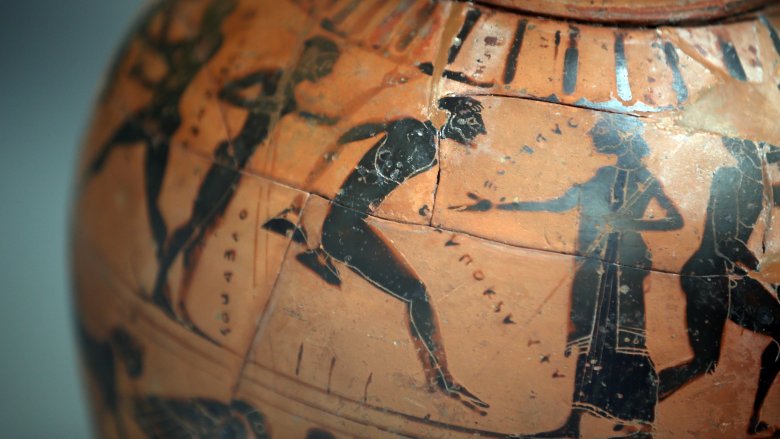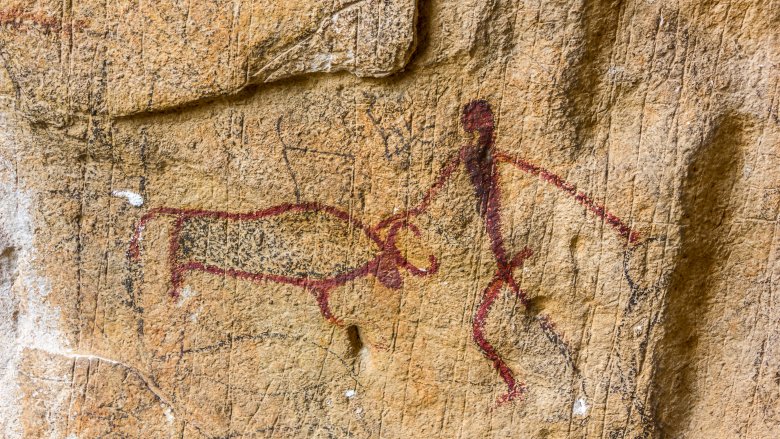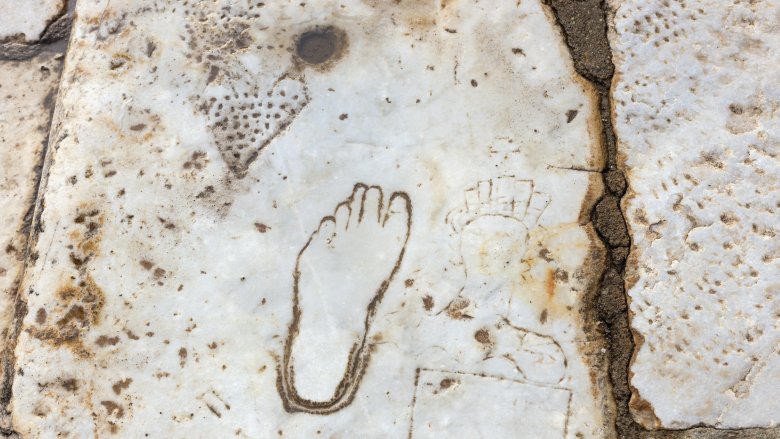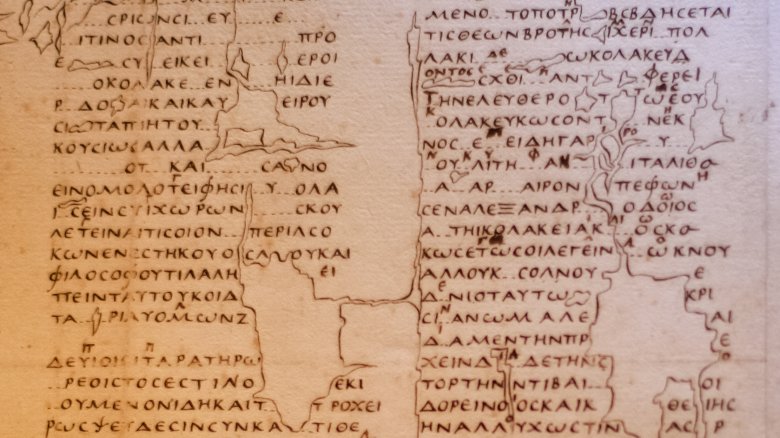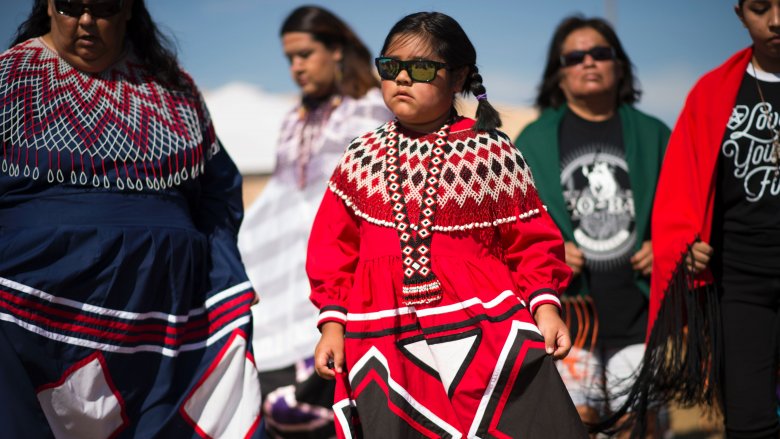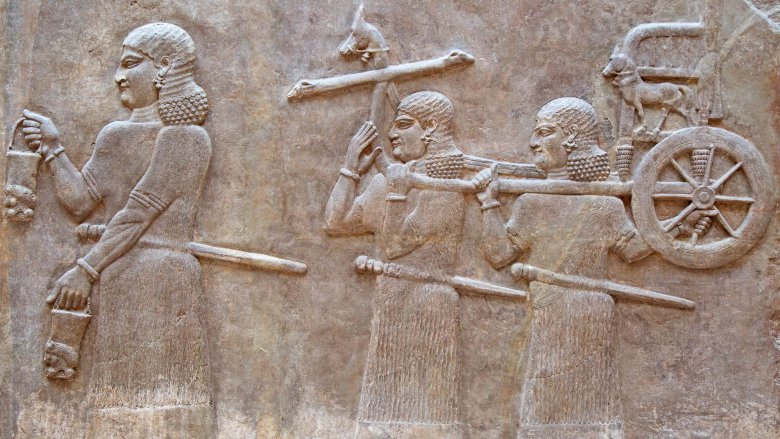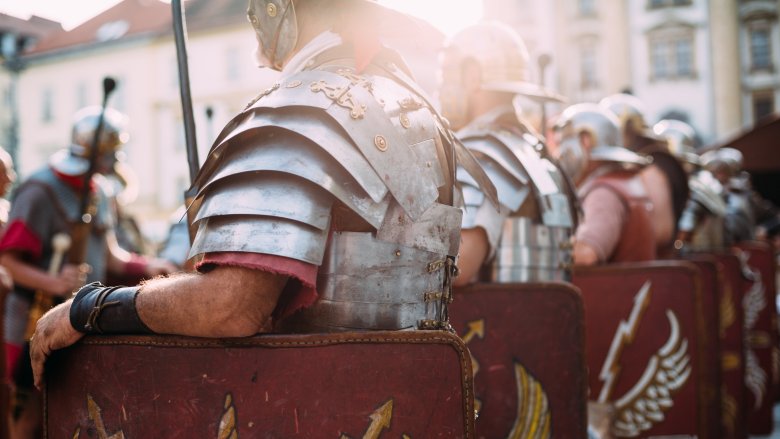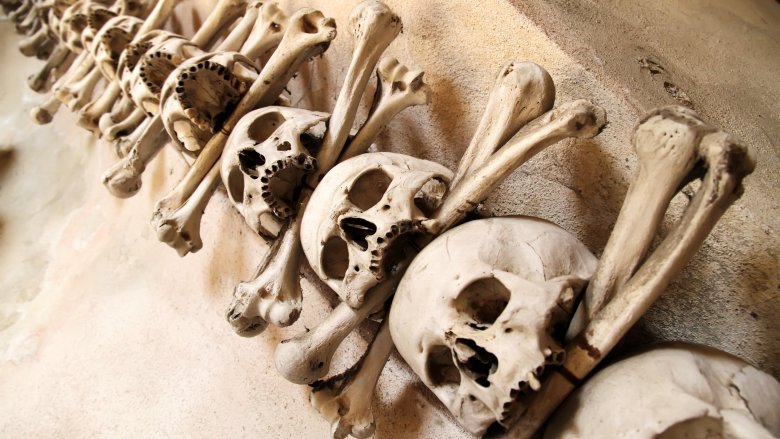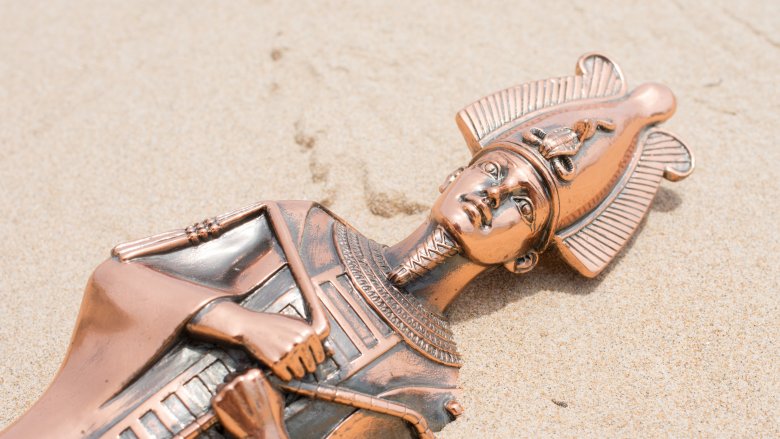This Is How Ancient Teenagers Lived
How did your teenage years go? We can probably guess. You traipsed through high school (or whatever your country's equivalent may be), got into a bit of mischief now and again, flirted with everyone, maybe played some sports, and generally languished in the easy life of youth. You might also assume that the teenagers who lived thousands of years ago were subject to hardships, oppression, and danger. In fact, it may come as some surprise to learn that ancient adolescents weren't that different from those in our own era. They played pranks, they loved, they fought — they just did it in another time. OK, so they were also forced into arranged marriages, sometimes got sacrificed to their gods, and had a good chance of never making it to adolescence at all, but apart from that, it's basically six to one and half a dozen to the other.
Education was a privilege
It'll probably be little comfort to anyone currently battling through school that young people have had to battle through school for thousands of years, but it's the truth. All across the ancient world, children and teenagers were educated — perhaps to an even higher degree than their later, medieval peers. The only difference from the modern era? Back then, you had to be rich.
According to Michigan State University, Egyptian children had to come from wealthy stock to receive a formal education. If so, they would go on to learn reading, writing and arithmetic. In Ancient Greece, education may have been more universal in the early years, but only wealthy teenagers would receive a secondary education — this time in rhetoric, sciences, and philosophy. If you were a slave or exceptionally poor, you probably weren't going to be spending your time doing geometry homework.
Fitness was serious business
One particularly important part of a teenager's upbringing in certain ancient cultures was physicality. As told by Scholastic, gymnastics was introduced to Greek society via a number of exercises such as running, jumping, swimming, throwing, wrestling, and weightlifting. Because these forms of gymnastics so well prepared Greek citizens for war, they became a central part of the Greek education system.
Later, the Romans co-opted the idea of using fitness training to prepare for war, and as the Empire grew, physical education became more and more crucial to the upbringing of a young Roman child. Today, the foundations laid by the Greeks and Romans remain, and their dedication to fitness lives on in the practicing of sports and other competitive physical events during modern primary and secondary education.
They were obscene
The legendary graffiti of Pompeii is pretty famous evidence that, no matter what year you're in, humans have always liked to scrawl a load of nonsense on any walls they can get away with. Naturally, this goes doubly for teenagers. Today, it's not a stretch to imagine that most of the lewd, borderline-pointless scribblings you might find in alleyways or public restrooms was placed there by young adolescents.
In the ancient world, too, it seems like that theory wouldn't be too far off the truth. A 2006 analysis of Paleolithic cave art suggested that much of the art in the cave — which included depictions of cave bears and lions, gory hunting scenes, random genitalia, and a whole lot more of what is pretty much pornographic material — was scrawled on the cave's walls by teenage boys.
Ancient teenagers enjoyed mischief
Perhaps the most comforting knowledge of the teenagers of the past — or even just ancient people generally — is that the simple, enjoyable pleasures have always remained the same. Things like good food, a drink from time to time, great company, a bit of sport, or standing in wet concrete for a laugh.
Yes, according to a 2015 archaeological find at the Roman fort in Vindolanda, Tyneside, ancient adolescents, just like modern ones, couldn't help themselves from getting into a bit of mischief. Archaeologists found a tile with a clear imprint of a foot near the fort. A quick analysis of the slab and the footprint showed that it was stood on by an adolescent sometime between 160 and 180 A.D.
Ancient teens were pretty shady
Some of the hijinks teenagers got up to, however, often took on a more sinister edge. A Greek document dating from the year 267 A.D., when translated, provided evidence of match-fixing in a wrestling tournament that had taken place in Egypt. One signatory of the contract — the father of a teenager wrestler named Nicantinous — agreed to pay the bribe to his son's opponent, Demetrius, if the latter was willing to throw the match.
If Demetrius was to "fall three times and yield," he would receive "three thousand eight hundred drachmas" of silver coins. "Cool, sounds like a lot of drachmas," you're saying. According to Aristophanes, one drachma was roughly equivalent to a day's wage for a skilled laborer in Ancient Greece. This was no small bribe, and the competition — known as the Great Antinoeia — was no small competition. Don't think adolescents have ever been completely innocent.
Coming-of-age rituals were a big deal for ancient teenagers
Coming-of-age ceremonies have existed in some form in pretty much every culture for thousands upon thousands of years. They usually took place in adolescence and often involved some unusual rituals or tests to usher the teenager into adulthood. Some have even survived into the modern day.
Faith Spotted Eagle, a native from South Dakota, explained to NPR that, in the old days, a girl would be immediately isolated from the camp after undergoing her first menstrual cycle. She would then be initiated in a four-day ceremony where the other women taught her how to cook, look after families, and face the tribulations of life. The ceremony eventually fell out of practice but was revived in the 1990s by the Brave Heart Women's Society. Native American culture, like many civilizations with long-standing histories, is filled to the brim with similar rituals and ceremonies, often differing by tribe.
Ancient teenagers were forced into marriage
Arranged marriages aren't exactly unheard of in certain cultures around the world, even today, but they were far more widespread in the ancient world. In Ancient Mesopotamia, marriage was more of a business than a romantic entanglement. Herodotus' writings depict, for example, a bridal auction in which young adolescent women were sold to the highest bidder to male Babylonians.
Like with many arranged marriages, the Mesopotamians approached them as a contract between the father of a girl and the intended husband. Unsurprisingly, the ancient girls (like, according to PBS, Roman girls who were often married in their early teens) had little say in the matter. If any of the participants in a marriage wanted to rebel against the engagement, they'd probably be put off by the number of penalties and incentives that were written into their marriage contracts. In the ancient world, adult life began early — especially if you were a young girl.
Teens joined the army in ancient times
While the teenage girls had arranged marriages and bridal auctions to deal with, the boys always had military service to look forward to. The Roman Army was one of the fiercest and most disciplined militaries in human history — it's no surprise to imagine that many young, impressionable men would want to join up. All but the lowest social ranks in the Empire were able to enlist.
According to Ancient History Encyclopedia, most recruits to the Roman Army were 18 to 20 years old. Young Roman soldiers could look forward to being receiving decent pay, being sent halfway across the known world (and sometimes to its edge) and, in the Empire's later years, duty on some fairly luxurious Army bases. Of course, if you weren't too keen on going off to fight Rome's wars, that didn't exactly exclude you — Rome was known to employ conscription from time to time.
Ancient teens were at risk of blood sacrifice
In some ancient civilizations, forced marriage or conscription wasn't exactly the worst thing that could happen to you as a teenger. No, that honor would have to go to human sacrifice. According to the Macmillan Encyclopedia of Death and Dying, blood sacrifice of humans has existed in some form or another, all across the world, since prehistory.
Children and adolescents were common fodder for the altar. In Gezer, which is now part of Israel, archaeologists discovered the burnt skeletons of 6-year-old children and the skulls of two adolescents, which had been sawed in two. Nearby, in Meggido, a 15-year-old girl's remains were also found, and further excavations suggested that many of these young sacrifices had been buried alive. Think about that next time you're complaining about your homework, kids.
Some of them never made it to adolescence
Of course, the tragic fact of ancient adolescence was that you were lucky to get there at all. Child mortality rates over the course of human history have tended to decline, and in the modern west we're lucky to live in a world where the majority of children reach adulthood, but that hasn't always been the case.
Nikki Brabaw at Michigan State writes that in Ancient Egypt, where life expectancy was 30 to 40 years, one in ten women would die in labor. Furthermore, child mortality was so high that many weren't given names until they became older and passed through the most dangerous period of their lives. Many Ancient Egyptian graves are marked only with "The Osiris" — a catch-all name, in reverence of the god of the underworld, for the children who never became teenagers.


